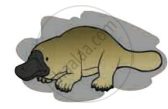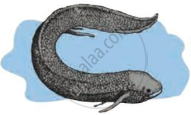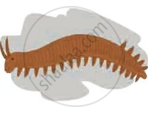Advertisements
Advertisements
Question
Give two examples of vestigial organs in human beings and plants.
Solution
Vestigial organs are remains of a structure that were functional in some ancestor but is no longer functional in present body.
Some examples of such organs in humans are:
(a) Appendix: The appendix is a small projection of the side of the large intestine near the cecum. It looks kind of like a tail and is found near where the small and large intestines meet. No one knows the actual original function of the appendix.
(b) The tail bone: Attached to the bottom of the sacrum is the coccyx or tailbone. This small, bony projection seems to be a leftover structure of primate evolution. It is believed that human ancestors once had tails and lived in trees. The coccyx would be where the tail was attached to the skeleton.
Some examples of such organs in plants are:
(1) Sexual organs of dandelions: The common dandelion reproduces asexually through a process known as apomixis. However, they still have all of the functional parts that most flowering plants use to reproduce sexually, namely the stamen and pistil.
(2) Grass often has small, undeveloped structures that strongly resemble those of flowering plants.
APPEARS IN
RELATED QUESTIONS
Mammals : _________ : : Amphibia : Fishes
State the connecting links between Peripatus with Annelida and Arthopoda.
What are vestigial organs?
(a) Select the analogous structures from the combination given below:
(i) Forelimbs of whales and bats
(ii) Eyes of octopus and mammals
(iii) Tuber of sweet potato and potato
(iv) Tuber of Bougainvillea and tendrils of Cucurbita
(b) State the kind of evolution they represent
Explain with an example for the given, how the following provides evidence in favor of evolution in organisms :
Homologous organs
How analogy and homology considered as an evidence in support of evolution ?
Which one of the following pairs of vegetables is an example of homologous structures?
(A) Potato and sweet potato
(B) Carrot and radish
(C) Carrot and tomato
(D) Tomato and radish
Enlist any four sequential evolutionary names of human ancestors.
What are homologous organs?
How do homologous organs help in providing evidence for organic evolution?
Human tailbone is a vestigial organ. Explain.
Name two animals having homologous organs and two having analogous organs. Name these organs.
Some dinosaurs had feathers although they could not fly birds have feathers that help them to fly. In the context of evolution, this means that ______
The presence of which of the following types of organs in two animals indicates that they are not derived from a common ancestor?
(a) homologous organs
(b) excretory organs
(c) analogous organs
(d) reproductive organs
What do you mean by vestigial structures? Name four vestigial organs found in man.
Explain any three molecular (genetic) evidences in favour of organic evolution.
Very short answer question:
What is vestigeal organ?
Explain the importance of Anatomical evidences with examples.
I am a connecting link between reptiles and mammals. Who am I?
Define the evidence of evolution shown in the figure.

Write the answers to the questions by observing the figure below.
 |
 |
 |
| (a) | (b) | (c) |
- Write the name of the animal ‘(a)’ in the figure.
- Write the name of the animal ‘(b)’ in the figure.
- Write the name of the animal ‘(c)’ in the figure.
- Which evolutionary evidence is illustrated by this figure?
- Write the definition of that evidence for evolution.
A human hand, a front leg of a cat, a front flipper of a whale and a bat’s wing look dissimilar and adapted for different functions. What is the name given to these organs?
Select the CORRECT match.
- Define vestigial organs.
- Write names of any two vestigial organs in the human body.
- Write name of those animals in which these vestigial organs are functional.
Why do all the gametes formed in human females have an X chromosome?
Evolutionary convergence is the development of:
The presence of gill slits, in the embryos of all vertebrates, supports the theory of ______.
Appearance of antibiotic-resistant bacteria is an example of ______.
Fossils are generally found in ______.
How do we compute the age of a living tree?
While creation and presence of variation is directionless, natural selection is directional as it is in the context of adaptation. Comment.
Explain divergent evolution in detail. What is the driving force behind it?
Complete the following chart:

What is the function of the appendix of our digestive system?
Find odd one out:
As shown in figure below some organisms that share a common ancestor have features that have different functions, but similar structures.

These are known as ______. Give example.
Find the odd one out:
Industrial melanism was highlighted by ______.
